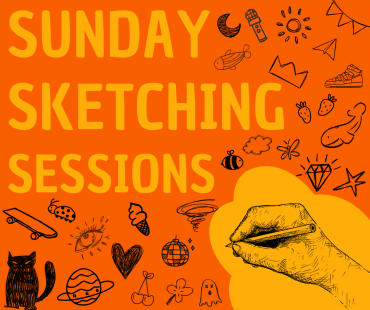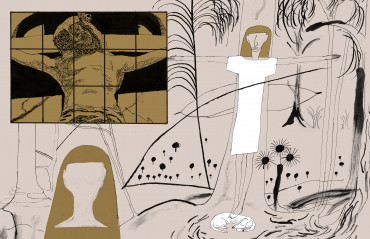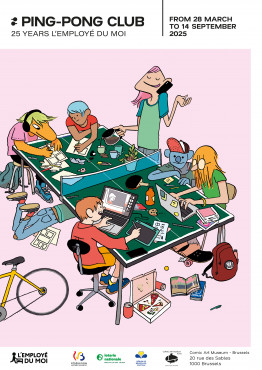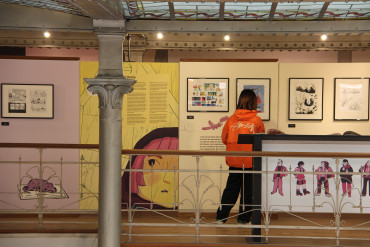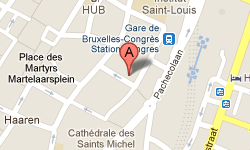The great temporary exhibitions
26.03.19 > 15.09.19
Wasterlain
The Universes of a Storyteller
Ever since he first spotted Wasterlain’s talent, Franquin collected the latter’s pages and drawings in a folder. And then one fine day, he showed them to our astonished author, who at the time was having terrible trouble in getting his work published. He was working as Peyo’s assistant, but Peyo was snowed under with work as a result of the immense success of the Smurfs, and could no longer supply him with enough work. Wasterlain then tried to launch two series in the comic magazine Tintin without having the benefit of having them published in comic book form. Franquin’s encouragement arrived just at the time when the comic magazine Spirou was finally prepared to take him under their wing, which instantly resulted in the publishers Éditions Dupuis opening their doors to him.
Just when, in rather unusual circumstances, he was launching the poetic, fantastic and humoristic adventures of Docteur Poche, Wasterlain happened to break his right hand. Suddenly, his round and regular drawing style turned rather sharp and angular, changing it to such a point that this new drawing style was gaining a following. During this period when a new generation of authors was coming onto the scene with the firm intention of escaping the caricature style of exaggerated facial features, his influence was very noticeable, especially among the up-and-coming authors of the comic magazine Spirou .
Wasterlain very soon became characterised as the ‘poet of comic strips’, due to his Docteur Poche who was full of imagination, sensitive and an environmentalist at heart, well before this trait even became fashionable. It gained him instant fame, and he was awarded numerous prizes, but all this weighed him down. Then, setting off on a completely different course, he created Jeannette Pointu , a female press photographer who travelled around the world reporting on faraway wars and forgotten or long-suffering peoples. He told his extremely wellresearched adventure stories with deep-felt empathy.
However, Wasterlain’s path was never to be a smooth one. Given that he was very attached to pre-releasing his stories in the weekly press, he nevertheless found it difficult to cope with the intense periods of upheaval suffered by the traditional publishing companies, which were constantly passing from one owner to the other. Whereas his Docteur Poche was aimed at a younger audience, he found his fantastic-humoristic ebullience and wit again in Gil et Georges, and later created the Pixels for a young audience which has effectively always been close to his heart.
This exhibition about Marc Wasterlain covers a whole page in the history of Belgian comic strip art that so rightly pays tribute to his immense talent.
JC De la Royère, exhibition organiser.
With the support of the Brussels-Capital Region.






